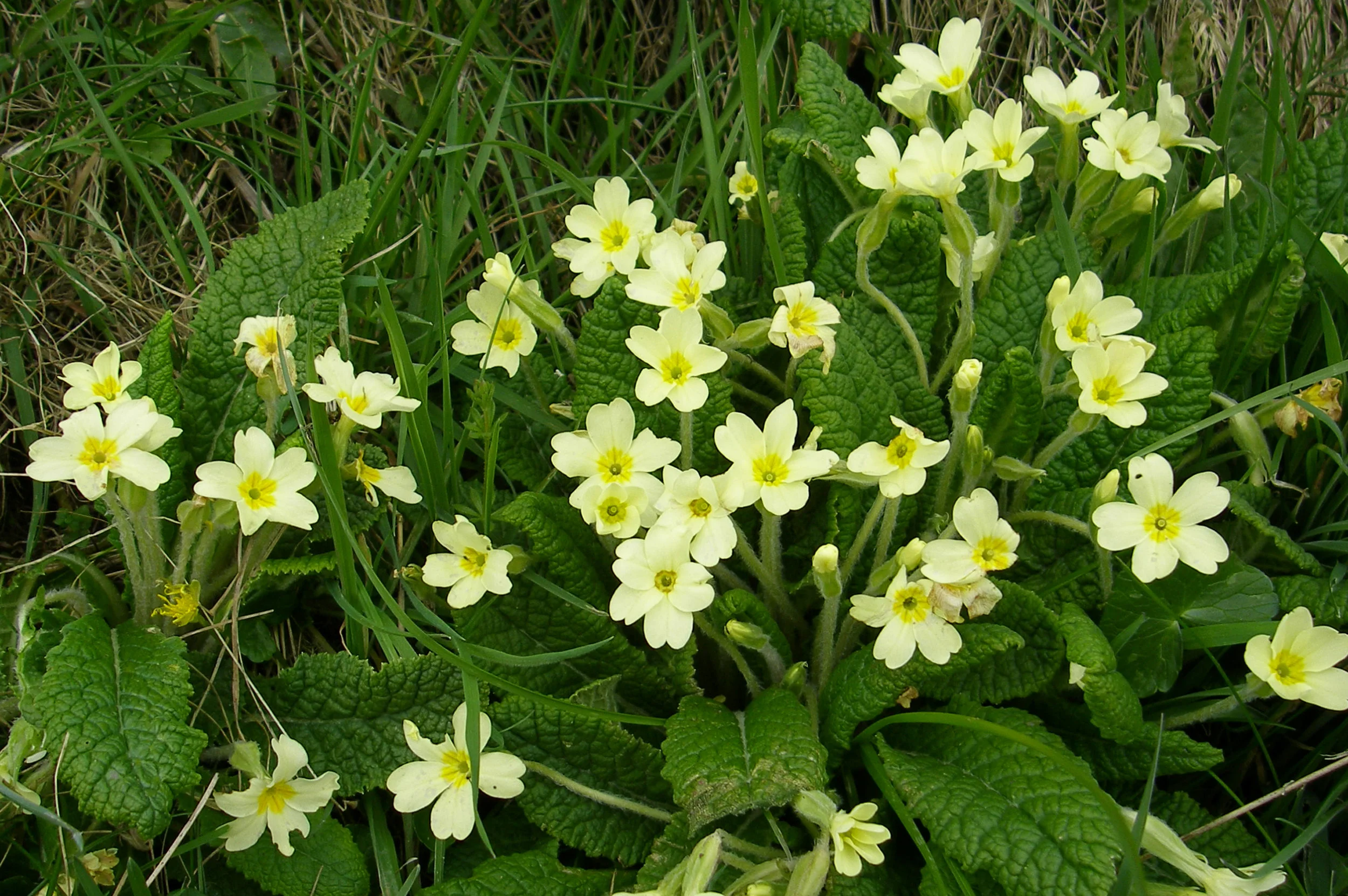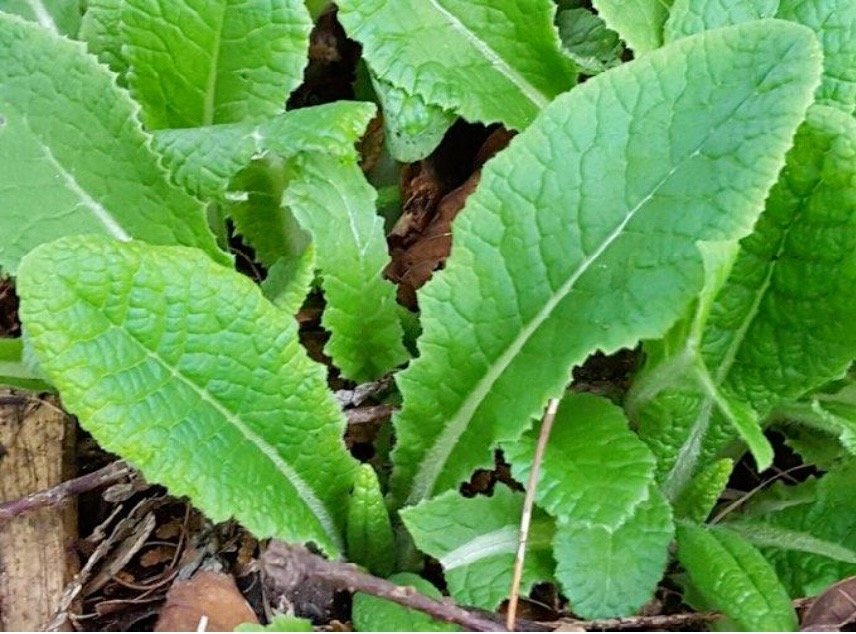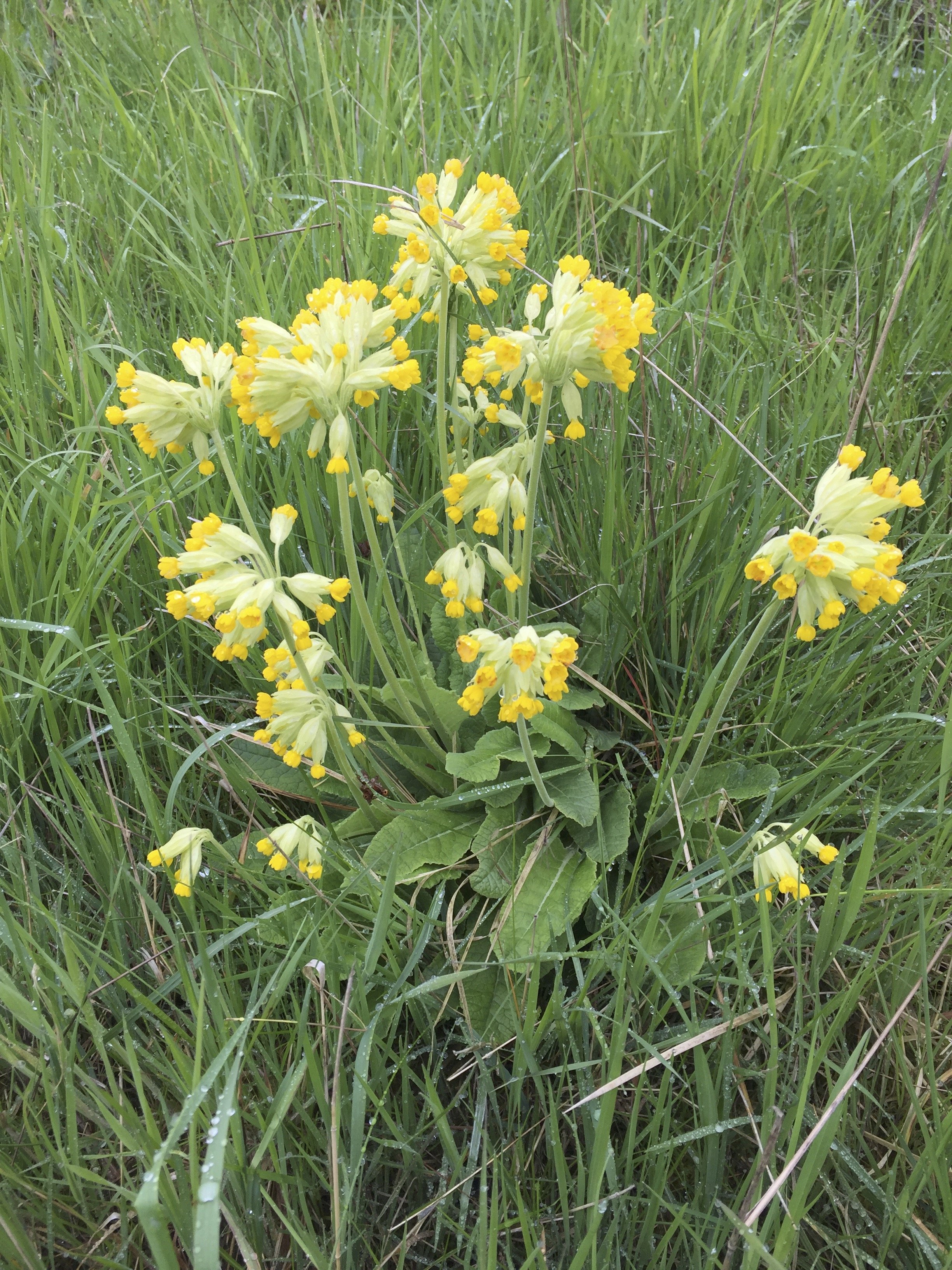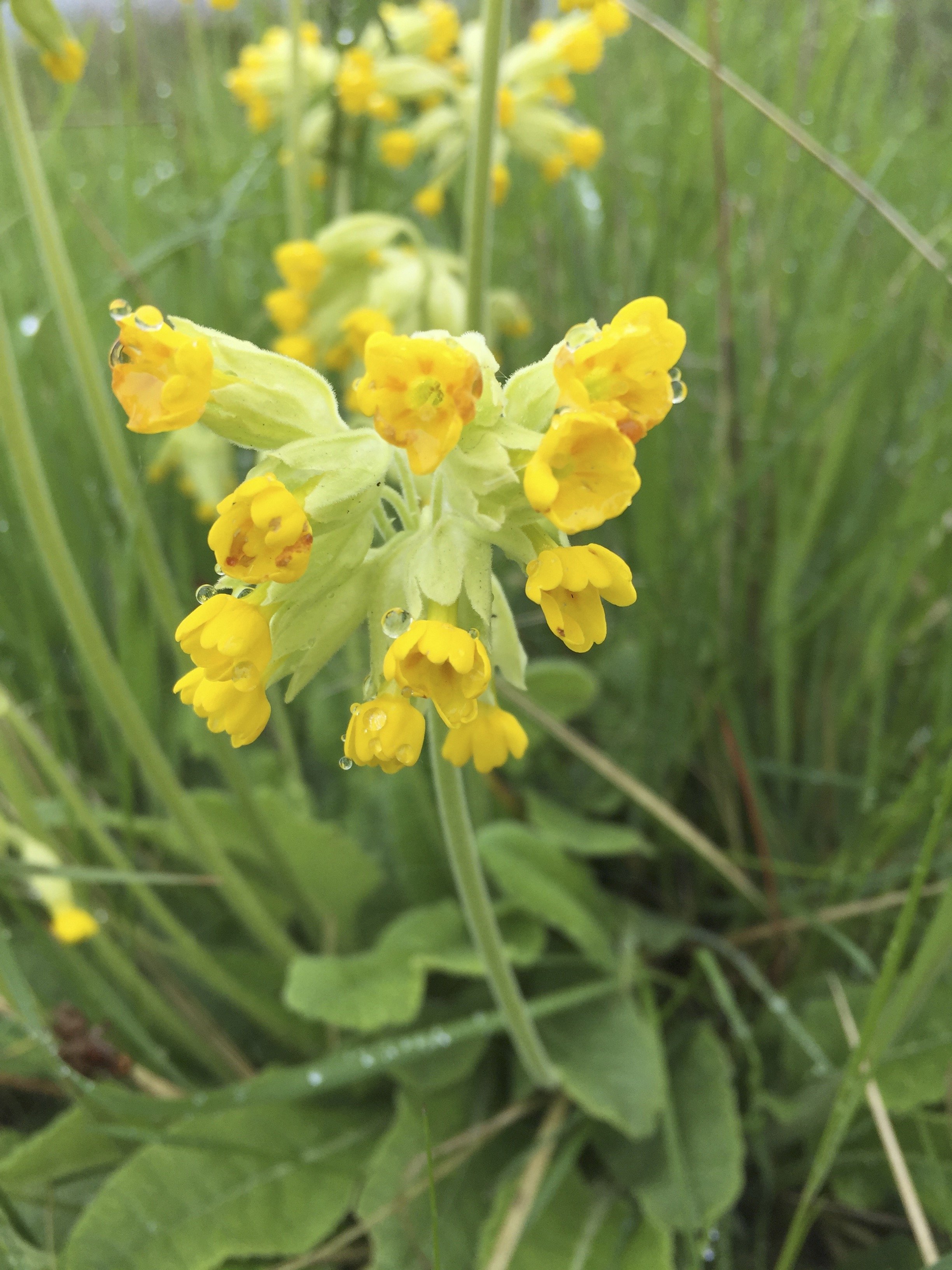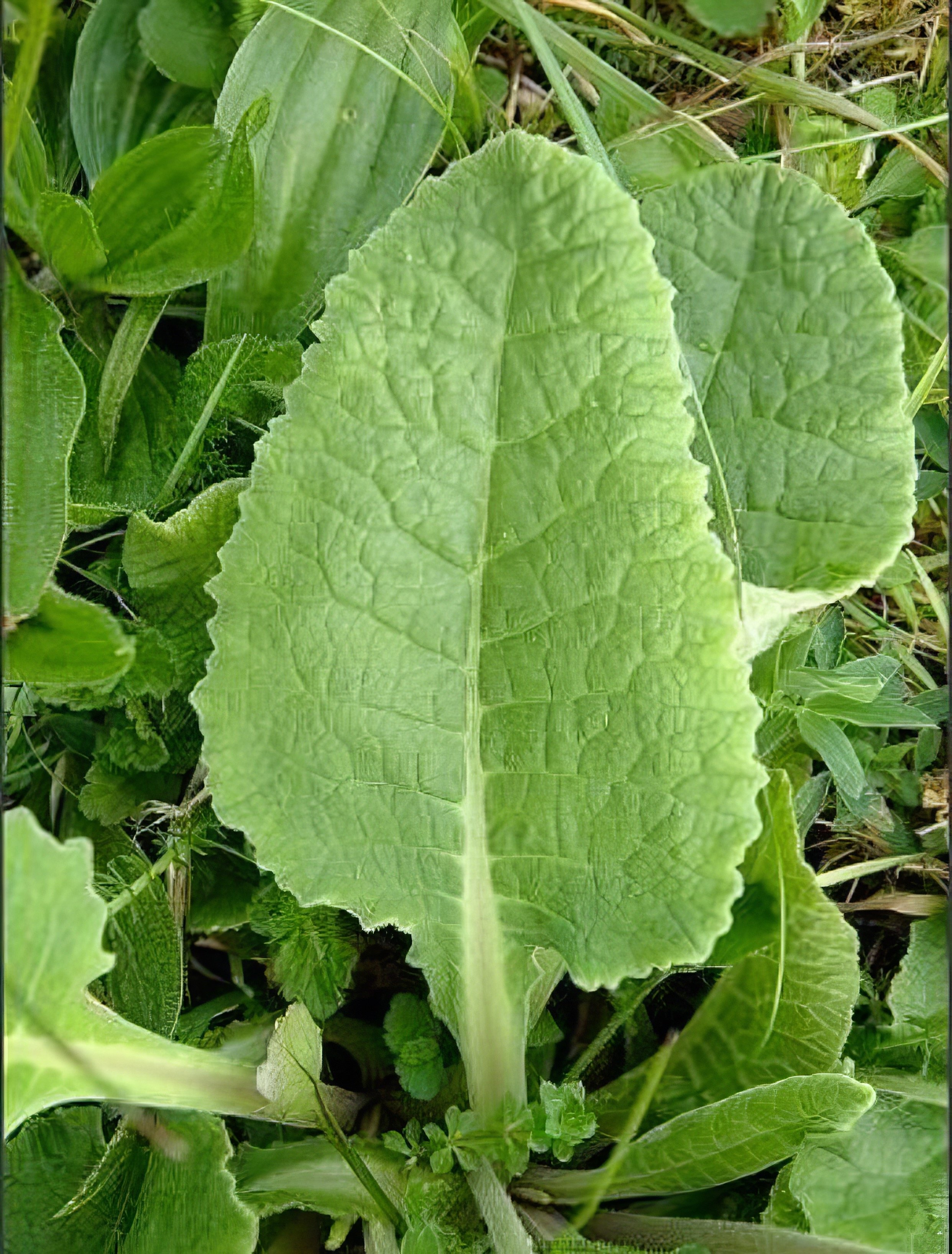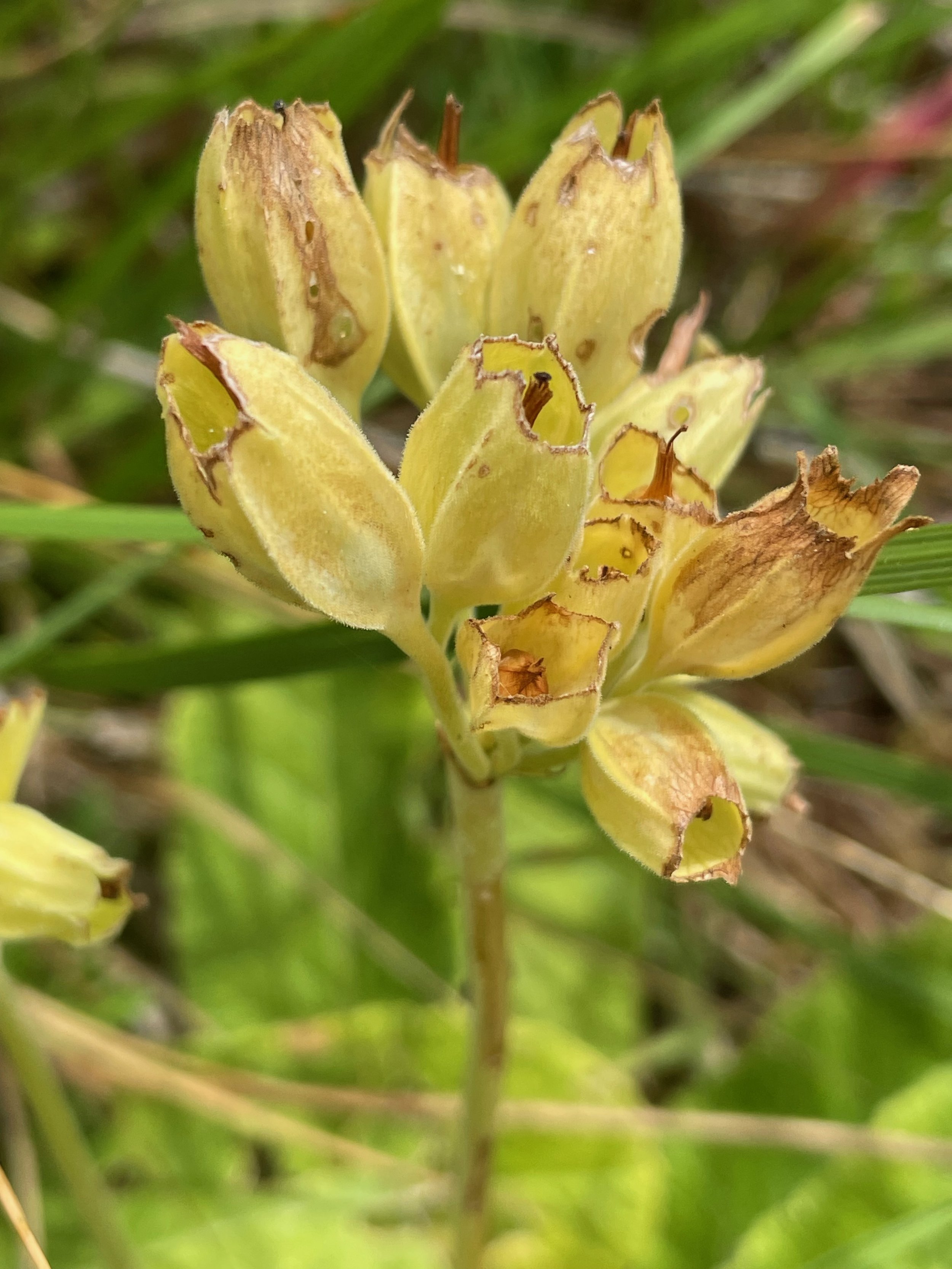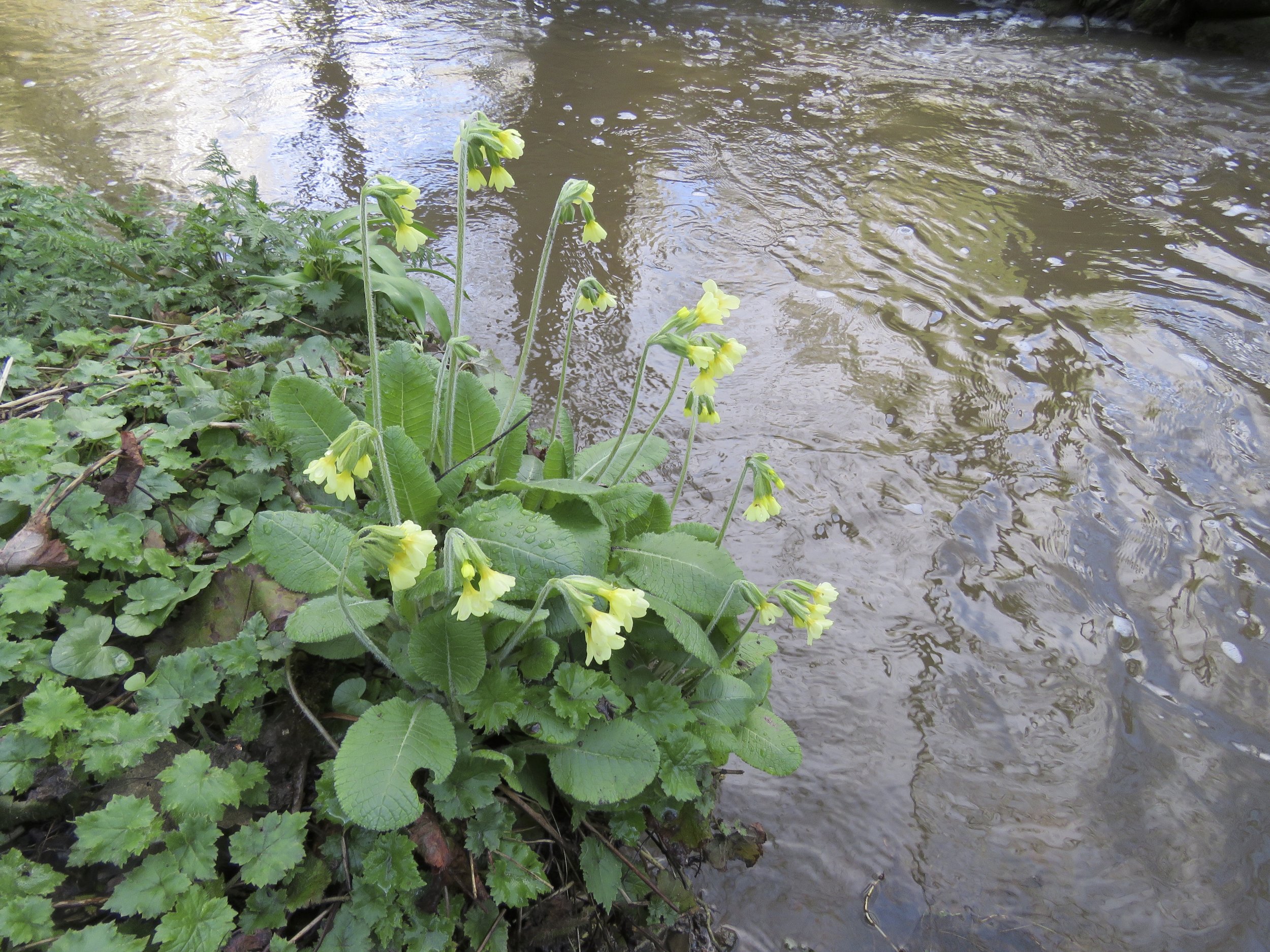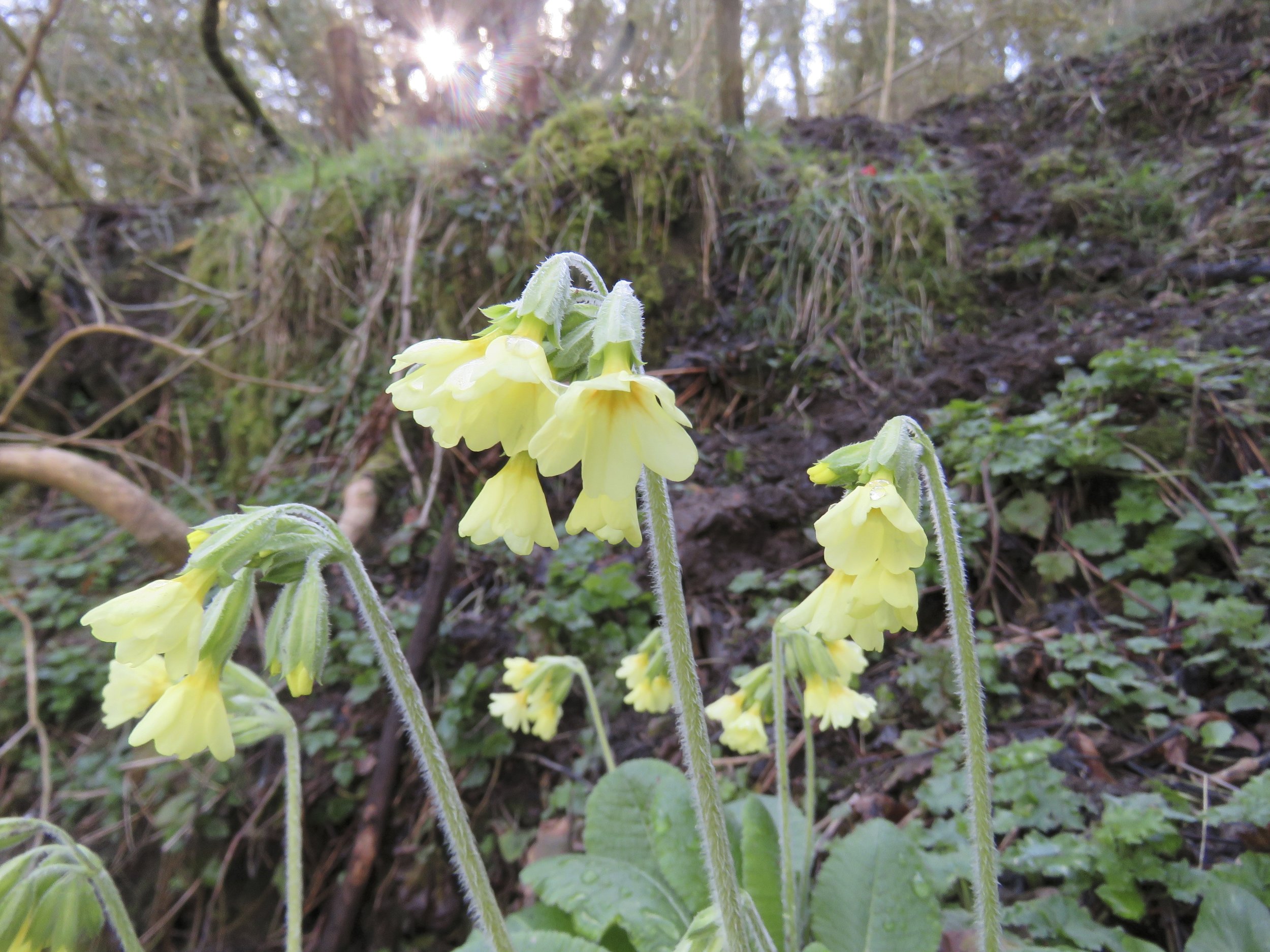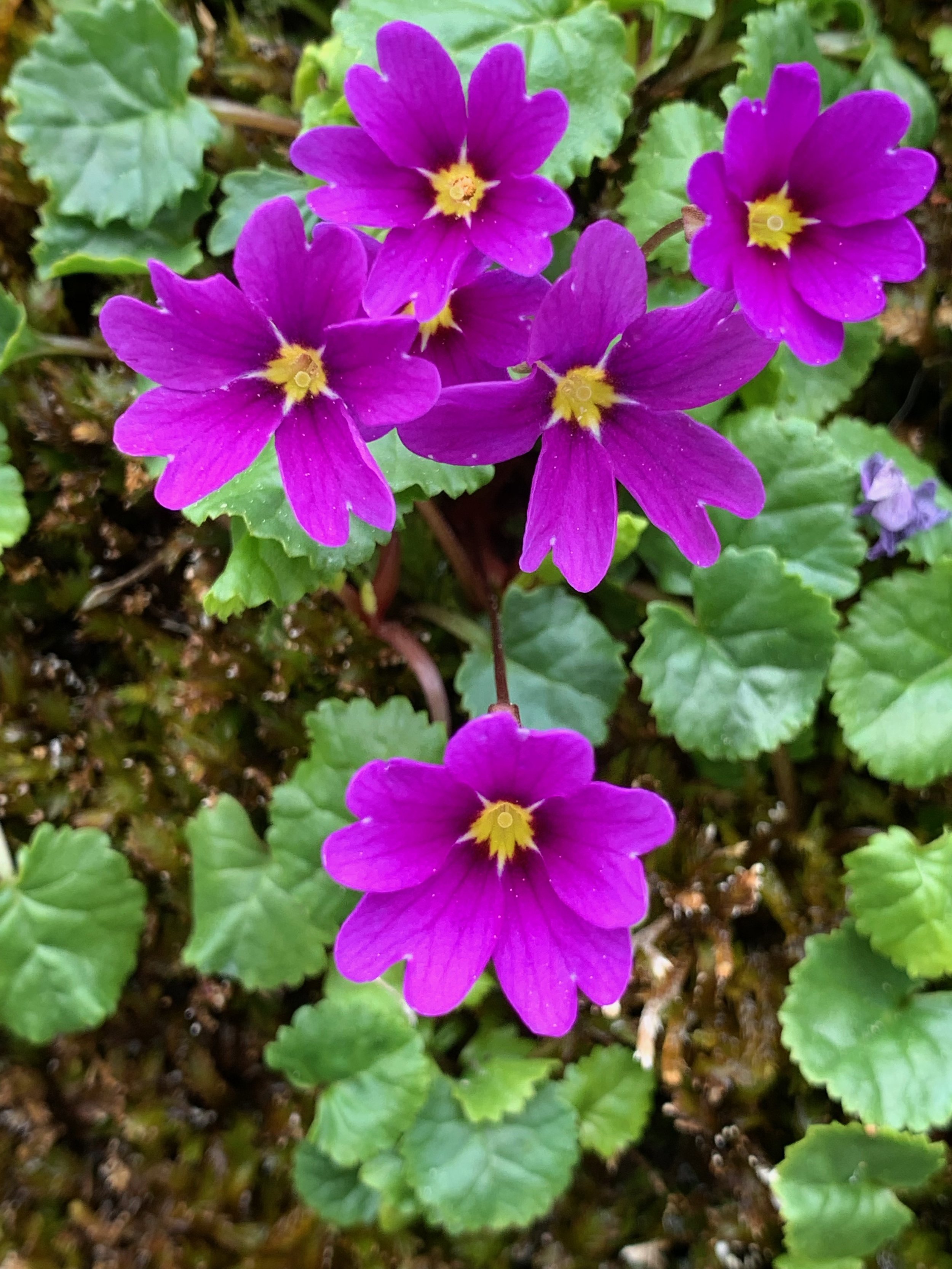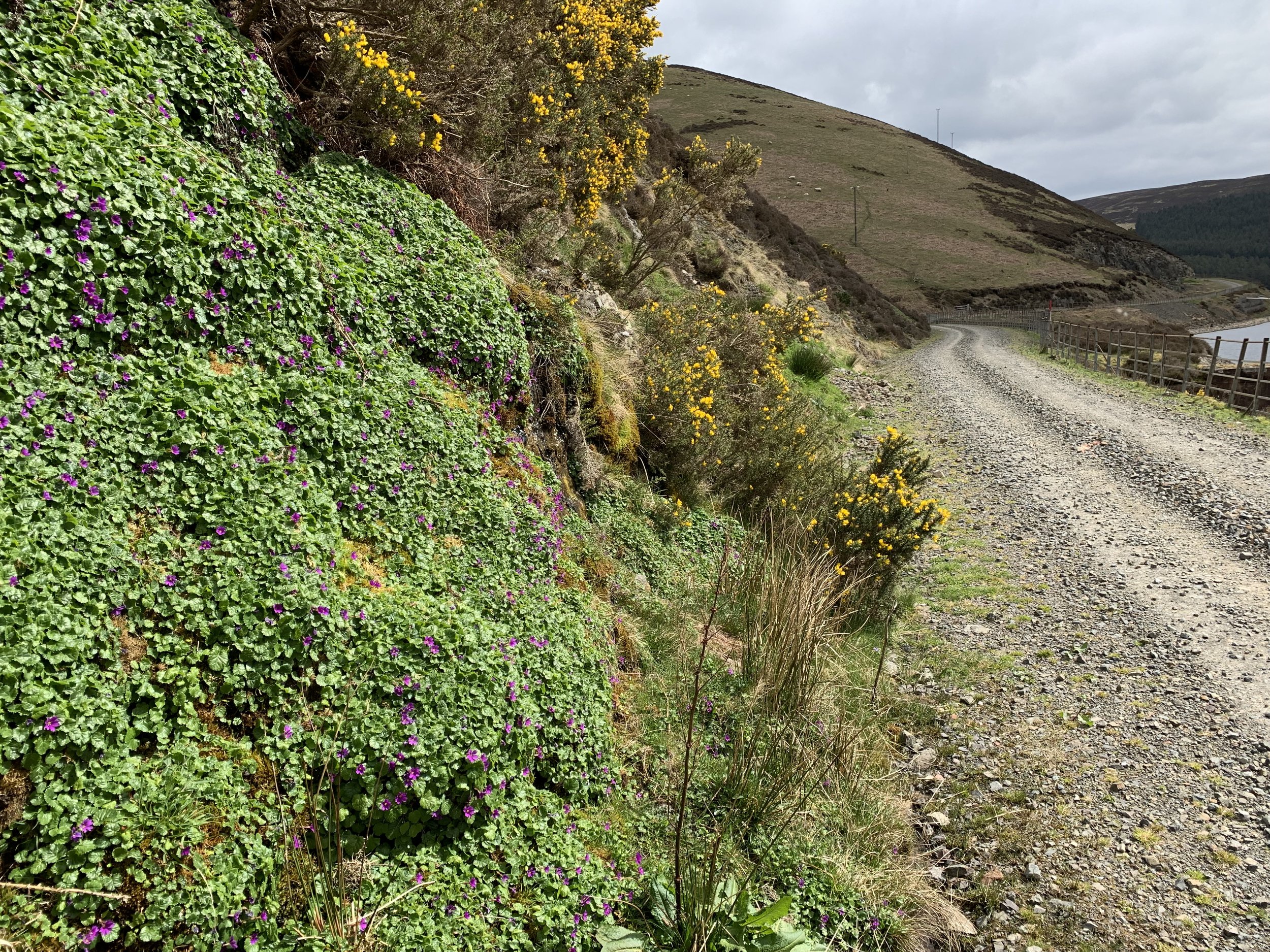Primula species - Primroses, Oxlip and Cowslips
Primula vulgaris - Primrose
Some of the plants that we think are primroses are hybrids between P. vulgaris and P. veris. P. vulgaris has long shaggy hairs on the flower stalk which arises from the leaf rosette and a gradually tapering leaf.
Primula veris - Cowslip
These have short striaght hair on the flower stalk which bears several flowers. The leaf abruptly contracts into the leaf stalk with a clear shoulder.
Primula x polyantha - Polyanthus
This is the hybrid Primula veris x vulgaris and is commonly planted and escapes but can also arise naturally where they grow together. It is intermediate between the two parents. If there is more than one flower on any stems and the flowers are not facing up and are paler yellow rather than orange-yellow, check the leaves and look at the hairs.
Primula elatior - Oxlip
A rare, charming flower with some unsavoury taste, Oxlip loves to grow on cow dung. If you’re in East Anglia, look for them blooming in woodland in the spring, but in Lanarkshire they’ll have been planted, but may spread.
The flowers all face the same way unlike the flowers facing all ways in Cowslip which has deeper yellow flowers.
Primula juliae - Julia’s Primrose
This is represented in the county by one large patch growing up a sloping rock face in South Lanarkshire. It is probably a garden escape, but in such a remote area, it is a mystery as to how it arrived there. This is one of three UK sites, the other two sites are in Southern England and at least one is planted.
P. juliae was discovered by Julia Mloskossjewicz (or Mloskosewitsch), the daughter of the Polish aristocrat, botanist, and forest inspector Ludwig Mloskossjewicz, near wet stones eighty miles east northeast of Tiflis in the Eastern Caucasus on April 20 in 1900 or 1901. By 1916 it was available as seeds for gardeners in the UK.

